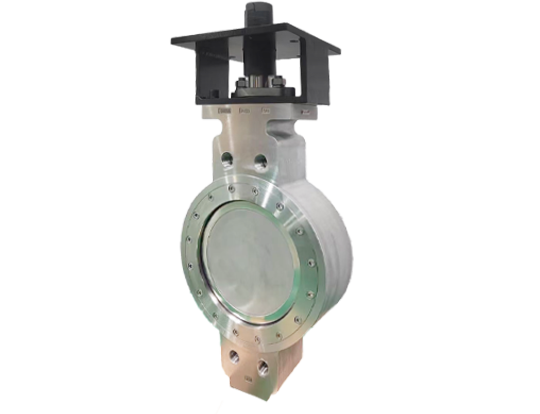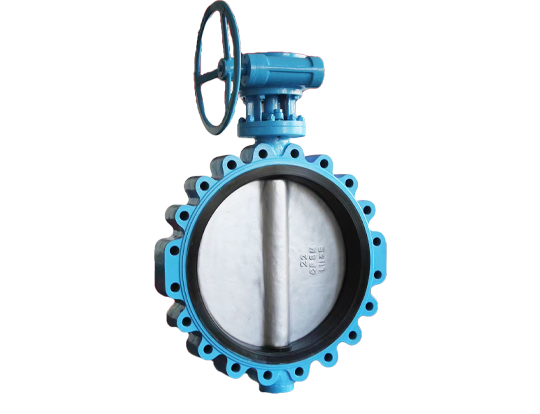- English
- Español
- Português
- русский
- Français
- 日本語
- Deutsch
- tiếng Việt
- Italiano
- Nederlands
- ภาษาไทย
- Polski
- 한국어
- Svenska
- magyar
- Malay
- বাংলা ভাষার
- Dansk
- Suomi
- हिन्दी
- Pilipino
- Türkçe
- Gaeilge
- العربية
- Indonesia
- Norsk
- تمل
- český
- ελληνικά
- український
- Javanese
- فارسی
- தமிழ்
- తెలుగు
- नेपाली
- Burmese
- български
- ລາວ
- Latine
- Қазақша
- Euskal
- Azərbaycan
- Slovenský jazyk
- Македонски
- Lietuvos
- Eesti Keel
- Română
- Slovenski
- मराठी
- Srpski језик
Are Butterfly Valves Truly Capable of Handling High-Pressure Scenarios
2025-10-13
I have been in this industry for a long time, and if I had a dollar for every time a client asked me this question, I would have retired years ago. It is a fundamental question, born from a mix of skepticism and necessity. Many engineers and plant managers carry a deeply ingrained belief that Butterfly Valves are the lightweight contenders of the valve world, great for low-pressure bulk handling but bound to buckle when the pressure really mounts. Today, I want to unpack this belief, not with marketing fluff, but with hard data and a clear-eyed look at what modern engineering can achieve.
So, let us rephrase the question from “Are they suitable” to a more practical one.
What Separates a Standard Butterfly Valve From a High-Pressure Champion
The simple answer is, not all Butterfly Valves are created equal. The standard, lug or wafer-style valve you might use for municipal water is a far cry from the engineered solution needed for a high-pressure steam line or a hydrocarbon injection system. The difference lies in a symphony of design and material choices. A valve that fails under pressure is not just an inconvenience; it is a significant safety hazard and a massive operational cost. I have seen the aftermath, and it is never pretty. The real question we should be asking is not about the entire category, but about the specific design that makes high-pressure performance possible.
The journey to a robust high-pressure Butterfly Valve begins with its core structure.
How Does the Disc Design and Shaft Integration Affect Pressure Integrity
This is the heart of the matter. In high-pressure applications, the forces acting on the valve disc are immense. A weak connection or a flawed disc design is a guaranteed point of failure.
-
Disc Geometry A high-performance disc is not a simple flat plate. It features a streamlined, aerodynamic profile that minimizes turbulence and pressure drop across the valve. This is not just about efficiency; it is about reducing the dynamic forces and vibrations that can fatigue the valve over time.
-
Shaft-to-Disc Connection This is the most critical mechanical interface. A standard keyed connection can develop play and fail. The true high-pressure champions use a design that eliminates this weakness altogether. For instance, our LYV® HP-Series valves feature a monobloc-type connection, where the shaft and disc are forged and machined as a single, integral unit in critical areas, or use advanced splined connections that distribute torque and thrust forces evenly, leaving no room for failure.
But a strong skeleton is useless without the right armor. This brings us to the next pivotal point.
Why Are the Materials and Sealing System the Soul of a High-Pressure Butterfly Valve
Pressure is relentless. It will find and exploit any weakness, especially in the seal. The sealing system is what transforms a simple disc and body into a tight, reliable shut-off device under thousands of PSI.
Let us look at the specific parameters that define a high-pressure Butterfly Valve. The following table breaks down the key specifications for our LYV® HP-Series valves, which are specifically engineered for these demanding roles.
What Are the Critical Performance Parameters for a High-Pressure Butterfly Valve
| Parameter | LYV® HP-Series Standard Specification | Notes / Application Context |
|---|---|---|
| Pressure Rating (PN) | PN 100 to PN 420 | Corresponding to ANSI Class 600 to Class 2500. |
| Temperature Range | -29°C to 200°C (-20°F to 392°F) | Special grades for cryogenic or high-temp (up to 815°F) available. |
| Body Material | Forged Carbon Steel (A105) / Stainless Steel (A182 F316/F304) / Duplex Stainless Steel | Forged materials provide superior integrity over castings. |
| Disc Material | 316 Stainless Steel / 17-4PH / Duplex 2205 / Inconel 625 | Matched to body material to prevent galvanic corrosion and ensure strength. |
| Stem Material | 17-4PH Stainless Steel / 431 Stainless Steel | High-yield-strength materials to resist torsional and bending stresses. |
| Primary Seat Seal | Reinforced PTFE (RPTFE) / Metal-to-Metal (Inconel) | RPTFE for robust sealing, metal-seated for extreme temperatures and abrasion. |
| Leakage Class | Zero Leakage (Metal Seated) / Bubble-Tight (Soft Seated) | Meets or exceeds API 598, ANSI FCI 70-2, and MSS-SP-61 standards. |
| Operation Mode | Gear Operated / Pneumatic-Hydraulic Actuated / Electric Actuated | Manual gear operation for infrequent use, automated for control & safety systems. |
Seeing the specs is one thing, but knowing what they mean for your operation is another. Let us translate this into a direct comparison to help you understand the engineering leap.
How Does a High-Performance Butterfly Valve Compare to a Traditional Gate Valve
For decades, the gate valve was the default choice for high-pressure isolation. But they are bulky, heavy, slow to operate, and prone to seat corrosion. A modern high-performance Butterfly Valve offers a compelling alternative. The next question I always get is, "What do I gain by switching?"
What Are the Tangible Benefits When You Upgrade to a LYV® HP-Series Valve
The advantages go far beyond just a line on a spec sheet. They translate into real-world operational savings and safety.
-
Radical Weight and Space Reduction A LYV® valve can be up to 70% lighter and 90% shorter than a comparable class gate valve. This simplifies support structures, reduces installation time, and frees up precious space in compact plants.
-
Faster and Safer Operation A quarter-turn versus dozens of turns for a gate valve. In an emergency shutdown situation, speed is safety. Our actuated valves can isolate a line in seconds, not minutes.
-
Dramatically Lower Lifetime Maintenance Gate valves have complex internal geometries that trap fluid and are prone to sticking and seat damage. The simple design of a Butterfly Valve has fewer cavities and, with the right materials, offers far superior resistance to scaling and corrosion.
Of course, specifications and benefits only tell part of the story. Let me address the most common questions I hear from engineers who are considering a high-performance Butterfly Valve for the first time.
Butterfly Valve FAQ Your Top Questions Answered
What is the main advantage of a metal-seated butterfly valve over a soft-seated one
A metal-seated valve, like our LYV® HP-Series with Inconel seats, is designed for the most extreme conditions. It can handle temperatures far beyond the limits of any polymer and is highly resistant to abrasive slurries and erosion. While a soft-seated valve like our RPTFE version offers "bubble-tight" shut-off, a metal-seated valve provides ultimate durability and fire-safe performance in critical applications like hydrocarbon pipelines or high-temperature steam lines.
Can a butterfly valve be used for both isolation and throttling control in high-pressure systems
Yes, absolutely, but with critical caveats. The v-notch profile of a high-performance disc provides excellent flow characteristics for control. However, for throttling service, you must consider the cavitation and flashing potential. The high-velocity flow across a partially open disc can cause a rapid pressure drop, potentially damaging the valve and downstream piping. For such duties, we recommend our LYV® control-centric trim designs that are specifically engineered to manage energy and minimize these destructive effects.
How do I ensure the long-term reliability of my butterfly valves under constant high pressure
Preventative maintenance is key, though our designs require far less than legacy valves. The primary focus should be on the stem seals and the actuator mounting. Regularly check for external leakage around the stem. Ensure the actuator bolts are torqued to specification to maintain the structural integrity of the assembly. Internally, the monolithic shaft-disc design of the LYV® HP-Series virtually eliminates the most common internal failure point, giving you a significant reliability advantage from the start.
The evidence is clear. The question is no longer if a Butterfly Valve can handle high pressure, but which one you should trust. The distinction lies in deliberate, no-compromise engineering focused on material science, mechanical integrity, and a sealing system that stands up to the test.
Do not let outdated assumptions dictate your equipment choices and compromise your operational safety and efficiency. The engineering conversation has moved on.
Contact us today with your specific pressure, temperature, and media requirements. Our engineering team is ready to provide you with a detailed datasheet and a consultation to prove how the LYV® HP-Series can be the robust, high-performance solution you have been looking for. Let us show you the difference two decades of focused innovation can make.






